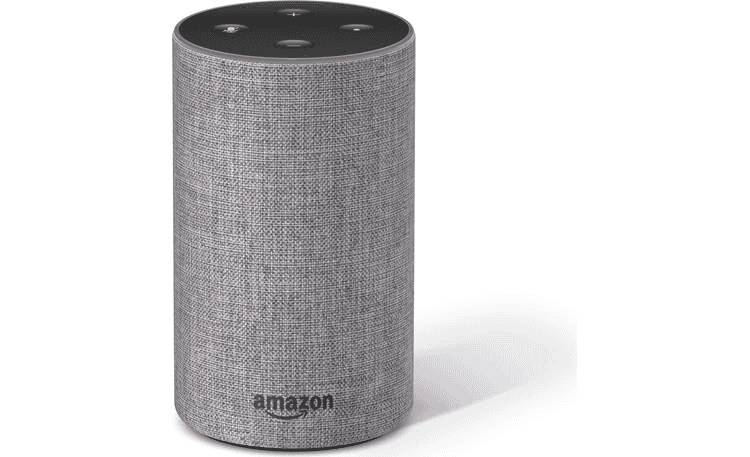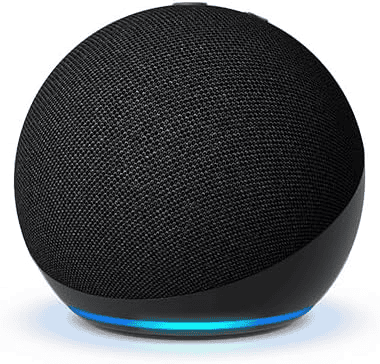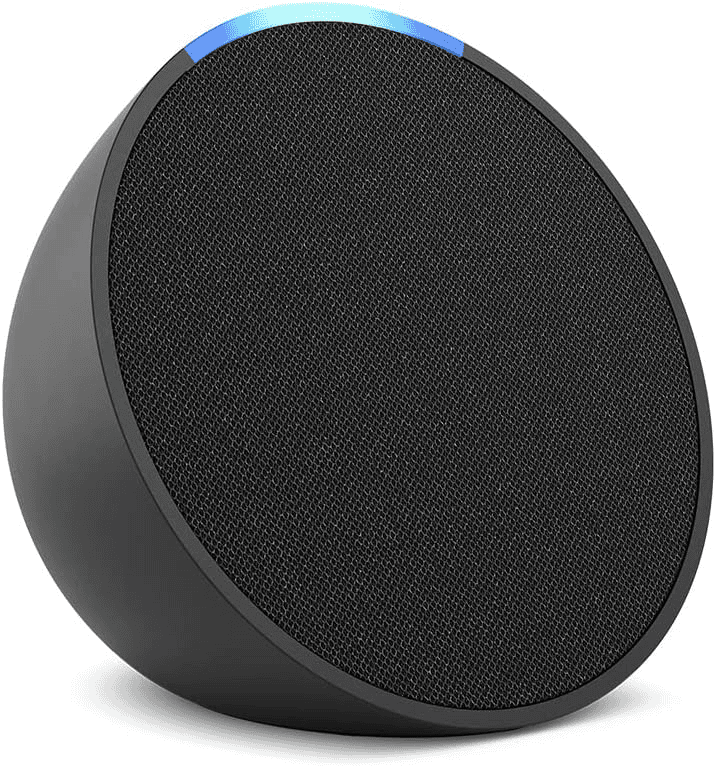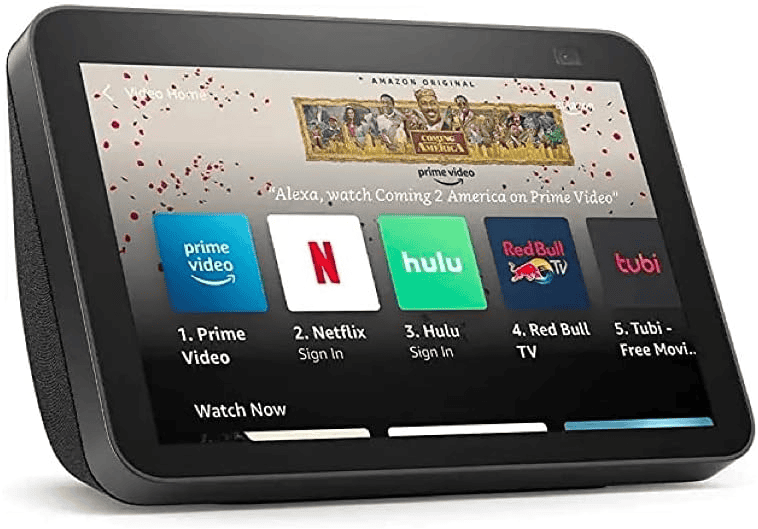
Amazon Echo devices have changed the way people interact with technology in their homes. These smart speakers use voice commands to play music, control smart home devices, and answer questions. The Amazon Echo has gone through several generations since its launch in 2014, each bringing new features and improvements.
Amazon’s Echo lineup started with a single device and has grown to include many options. The original Echo was a tall cylinder, but newer models have different shapes and sizes. Some Echo devices now have screens, allowing users to see information and make video calls.
Each new Echo generation has brought better sound quality and more advanced voice recognition. The latest models can act as smart home hubs, connecting and controlling other devices in your house. They also offer improved privacy features and faster processing for quicker responses to your questions.

Amazon Echo: A Journey Through Generations
Amazon’s Echo line of smart speakers has revolutionized how we interact with technology in our homes. From the original Echo to the latest Echo Show 15, each generation has brought new features and improvements, solidifying Alexa’s place as a household staple.
Let’s take a walk down memory lane and explore the Amazon Echo generations in order of their release:
Standard Echo
1st Generation: Amazon Echo (2014)

- The original cylindrical Echo introduced the world to Alexa, Amazon’s voice-activated virtual assistant.
- It featured a built-in speaker for playing music, setting alarms, and answering questions.
- This marked the beginning of the smart speaker revolution.
2nd Generation: Amazon Echo (2017)

- A more compact and stylish design with improved audio quality.
- Introduced interchangeable shells for customization.
- Expanded Alexa’s capabilities with new skills and features.
3rd Generation: Amazon Echo (2019)

- Further refined audio with Dolby processing for richer sound.
- A fabric-covered design for a more aesthetically pleasing look.
- Enhanced smart home capabilities with a built-in Zigbee hub.
4th Generation: Amazon Echo (2020)

- A spherical design with a revamped audio architecture.
- Improved sound quality with adaptive audio that adjusts to your environment.
- A built-in smart home hub for seamless device control.
Echo Dot Generations

- Echo Dot (1st Gen – 2016)
- Echo Dot (2nd Gen – 2016)
- Echo Dot (3rd Gen – 2018)
- Echo Dot (4th Gen – 2020)
- Echo Dot (5th Gen – 2022)

The Echo Dot, a smaller and more affordable version of the Echo, has also seen several generations, each offering improved sound and features.
Echo Show Generations

- Echo Show (1st Gen – 2017)
- Echo Show (2nd Gen – 2018)
- Echo Show 5 (1st Gen – 2019)
- Echo Show 8 (1st Gen – 2019)
- Echo Show (3rd Gen – 2021)
- Echo Show 5 (2nd Gen – 2021)
- Echo Show 8 (2nd Gen – 2021)
- Echo Show 10 (3rd Gen – 2020)
- Echo Show 15 (1st Gen – 2021)
The Echo Show line introduced a touchscreen display to the Echo family, enabling video calls, watching videos, and controlling smart home devices with visual feedback.
Other Notable Echo Devices

- Amazon Tap (2016)
- Echo Look (2017)
- Echo Spot (2017)
- Echo Plus (1st Gen – 2017)
- Echo Plus (2nd Gen – 2018)
- Echo Flex (2019)
- Echo Studio (2019)
- Echo Auto (2018)
- Echo Frames (2019)
- Echo Loop (2019)
- Echo Buds (2019)
Echo Pop Generations

- Echo Pop (1st Gen – 2023)
- Echo Pop Kids (1st Gen – 2023)
The Echo Pop, released in 2023, is Amazon’s most affordable smart speaker, designed to fit seamlessly into any space. It offers a surprising amount of sound for its compact size and comes in a variety of colors. The Echo Pop Kids is a special edition designed for children, with parental controls and kid-friendly content.
Amazon has also released a variety of other Echo devices, including portable speakers, smart displays with cameras, and even wearables, further expanding the possibilities of Alexa integration into our lives.
Amazon Echo Generations by Device Type
Echo
| Generation | Release Year | Key Features |
|---|---|---|
| 1st Gen | 2014 | Cylindrical design, foundational voice control |
| 2nd Gen | 2017 | Shorter design, fabric cover, improved sound |
| 3rd Gen | 2018 | Improved sound quality, fabric cover |
| Studio | 2019 | High-fidelity audio, Dolby Atmos support |
| 4th Gen | 2020 | Spherical design, improved audio and smart home hub |
Echo Show
| Generation | Release Year | Key Features |
|---|---|---|
| 1st Gen | 2017 | 7-inch touchscreen, video calling, smart home control |
| 2nd Gen | 2018 | 10-inch touchscreen, improved sound, Zigbee hub |
| 5 | 2019 | 5.5-inch touchscreen, compact design |
| 8 | 2020 | 8-inch touchscreen, adaptive display |
| 10 | 2020 | 10.1-inch touchscreen, motorized base, improved camera |
| 15 | 2021 | 15.6-inch touchscreen, wall-mountable, customizable widgets |
Echo Pop
| Generation | Release Year | Key Features |
|---|---|---|
| 1st Gen | 2023 | Compact design, front-firing speaker, vibrant colors |
Echo Dot
| Generation | Release Year | Key Features |
|---|---|---|
| 1st Gen | 2016 | Puck-shaped design, basic voice control |
| 2nd Gen | 2017 | Improved sound, fabric cover |
| 3rd Gen | 2018 | Spherical design, improved audio quality |
| 4th Gen | 2020 | Spherical design with LED ring, improved bass |
| 5th Gen | 2022 | Improved audio and sensors, temperature sensor |
| Kids 5th Gen | 2022 | Similar to 5th Gen, kid-friendly designs and features |
Echo Auto
| Generation | Release Year | Key Features |
|---|---|---|
| 1st Gen | 2018 | Brings Alexa to your car, connects to phone’s audio system |
| 2nd Gen | 2022 | Slimmer design, improved microphone array |
Note: This is not an exhaustive list and may not include all special editions or regional variations.
Key Takeaways
- Amazon Echo devices have evolved from simple speakers to smart home hubs
- Newer Echo models offer better sound, screens, and more advanced features
- The Echo lineup now includes various sizes and types to fit different needs
Evolution of Amazon Echo Devices
Amazon’s Echo devices have changed a lot since they first came out. The company has made many new models with better features over time.
First Generation Echo
The first Amazon Echo came out in 2014. It was a tall cylinder with a blue light ring on top. This device let people use voice commands to play music, set alarms, and ask questions.
The original Echo had seven microphones to hear voices from far away. It connected to the internet to access Alexa, Amazon’s voice assistant. Alexa could answer questions and control smart home devices.
At first, the Echo didn’t do much. But Amazon kept adding new skills. Soon it could order products, read news, and even tell jokes.
Advancements in Echo Design
The Echo’s design changed a lot over time. In 2017, Amazon made the second generation Echo. It was shorter and had fabric covers you could change.
The third generation came in 2019. It had better sound and looked rounder. In 2020, the fourth generation Echo became a sphere. This new shape helped the sound spread out better.
Each new version got better at hearing voices. They also got better at playing music. The latest Echos have temperature sensors and can work as smart home hubs.
Introduction of Echo Dot and Echo Show
In 2016, Amazon made the Echo Dot. It was a smaller, cheaper version of the Echo. The Dot fit in more places and made Alexa available to more people.
The Echo Show came out in 2017. It added a screen to the Echo. This let users see weather forecasts, watch videos, and make video calls. The Show came in different sizes to fit different needs.
Both the Dot and Show have gone through many updates. Each new version got better screens, speakers, and features.
Latest Innovations: Echo Studio and Echo Show 10
The Echo Studio came out in 2019. It’s made for music lovers who want great sound. The Studio has five speakers and can adjust its sound to the room it’s in.
In 2020, Amazon released the Echo Show 10. This device has a screen that can turn to face you as you move. It’s great for video calls or watching shows while you walk around a room.
These newer Echos show how far the devices have come. They can now fill a room with sound and follow you with a screen. Amazon keeps finding new ways to make Alexa more useful in daily life.
Integration with Smart Home Technology
Amazon Echo devices have become a key part of many smart homes. They can control lights, locks, and other gadgets. They also work with many different smart home systems.
Smart Home Hub Capabilities
The Amazon Echo (4th Gen) has a built-in smart home hub. This lets it connect directly to smart home devices. Users don’t need a separate hub for many gadgets.
Echo devices can control:
- Smart lights
- Thermostats
- Door locks
- Security cameras
Users can group devices by room or create routines. For example, saying “Alexa, goodnight” could turn off lights and lock doors.
The Echo Hub is a new device made just for smart homes. It has a screen to show and control connected devices.
Compatibility with Zigbee and Bluetooth
Echo devices work with two main wireless systems: Zigbee and Bluetooth.
Zigbee is used by many smart home devices. It doesn’t use much power and can connect many devices at once. The Echo Plus and 4th Gen Echo have Zigbee built in.
Bluetooth is good for speakers and some smart locks. Most Echo devices can connect to Bluetooth gadgets.
This wide support means Echo devices can work with thousands of smart home products. Users can mix and match brands and types of devices.
Expansion with Amazon Sidewalk
Amazon Sidewalk is a new network for smart devices. It uses a small part of your internet to help nearby devices stay connected.
Sidewalk can:
- Extend the range of smart devices
- Keep devices working if Wi-Fi goes down
- Help set up new devices
Many Echo devices can act as Sidewalk bridges. This means they help create the network.
Sidewalk is still new. Not many devices use it yet. But it could make smart homes work better in the future.
Features and Functionality
Amazon Echo devices offer a range of helpful features. These include voice assistance, music playback, calling, and utility functions. Each generation has added new capabilities to make daily tasks easier.
Voice Assistance and Alexa Capabilities
Alexa is the digital assistant that powers Echo devices. It can answer questions, control smart home devices, and perform many tasks. Users can ask Alexa about weather, news, or sports scores.
Alexa can also set reminders, create to-do lists, and manage calendars. The assistant learns over time to improve its responses.
New Echo generations have added more advanced voice recognition. This allows Alexa to understand different accents and voices better.
Music Playback and Integration with Amazon Music
Echo devices act as smart speakers for playing music. They connect to various streaming services like Spotify and Apple Music.
Amazon Music integration is seamless on Echo devices. Users can ask Alexa to play songs, artists, or playlists from Amazon’s service.
Sound quality has improved with each Echo generation. Newer models offer better bass and clearer audio. Some Echo devices can be paired for stereo sound.
Call and Messaging Features
Echo devices allow hands-free calling and messaging. Users can make voice calls to other Echo devices or phone numbers.
Video calls are possible on Echo devices with screens. This feature lets users stay connected with family and friends.
Drop In is a unique Echo feature. It lets users connect instantly to other Echo devices they have permission to access.
Utility Functions: Timers, Alarms, and Reminders
Echo devices excel at everyday tasks. Setting timers is as simple as asking Alexa. This is useful for cooking or keeping track of tasks.
Alarms can be set by voice command. Users can wake up to their favorite songs or custom alarm tones.
Reminders help users stay organized. Alexa can remind about appointments, birthdays, or any important events.
These features have become more robust with each new Echo generation. They make Echo devices useful tools for daily life.
Audio and Visual Enhancements
Amazon’s Echo devices have made big strides in sound and display quality. These upgrades have changed how people use smart speakers and displays in their homes.
Development in Sound Quality: From Speakers to Dolby
The first Echo had a simple speaker setup. Newer models pack much more audio power. The 4th generation Echo uses advanced speakers and processing. This gives users crisp highs and deep bass.
Some Echo devices now support Dolby Audio. This tech creates a wider soundstage. It makes music and movies more lifelike. The Echo Studio goes even further with Dolby Atmos. This 3D audio format puts sounds all around the listener.
Echo devices can also pair up. Two Echos can form a stereo pair. This spreads the sound out for better listening. Users can add an Echo Sub for extra bass too.
Visual Display: From Echo Show 5 to Echo Show 15
Echo Show devices add screens to the Echo lineup. The smallest is the Echo Show 5 with its 5-inch display. It’s great for bedside tables or small spaces.
The Echo Show 8 and 10 offer bigger screens. They work well in kitchens or living rooms. The Echo Show 15 is the largest. Its 15-inch screen can hang on walls like a picture frame.
These displays show:
- Weather reports
- To-do lists
- Video calls
- Recipes
- Photos
- Streaming video
The bigger the screen, the easier it is to see from across a room.
Smart Display and Camera Integration
Echo Show devices do more than just show info. They have cameras for video calls. The Echo Show 10 can even turn to follow people as they move.
These cameras enable:
- Video chats with friends and family
- Home security monitoring
- Visual ID to personalize experiences
Smart home controls are easier with a screen. Users can see and control lights, thermostats, and cameras. Some Echo Shows work as hubs for other smart devices too.
The displays also make Alexa more helpful. Visual responses add to voice answers. This makes complex info easier to understand at a glance.
Frequently Asked Questions
Amazon Echo devices have changed over time. Each new version brings different features and designs. Let’s explore the key details about Echo generations.
How many different generations of Amazon Echo are there?
There are five main generations of Amazon Echo. The first Echo came out in 2014. Since then, Amazon has made new versions every few years.
What are the main differences between the Amazon Echo generations?
Each Echo generation has new features. The first Echo was tall and round. Newer ones are smaller and sphere-shaped. Sound quality has gotten better too. Newer models can do more smart home tasks.
Which generation of Amazon Echo is considered the most advanced?
The latest Echo is the most advanced. It has the best sound and newest tech. This model can control more smart home devices. It also has faster response times.
How do Amazon Echo models differ in features and functionality?
Echo models have different sizes and shapes. Some have screens, others don’t. Newer ones have better speakers. Each new version adds more skills. The latest can act as a smart home hub.
Can you list the Amazon Echo generations in chronological order of release?
The Echo generations in order are:
- First generation (2014)
- Second generation (2017)
- Third generation (2019)
- Fourth generation (2020)
- Fifth generation (2022)
What are the distinguishing features of the latest Amazon Echo generation?
The newest Echo has a round shape. It has much better sound than older models. This version can work as a smart home hub. It has faster processing for quicker responses. The latest Echo also has improved voice recognition.
What is the Newest Amazon Echo?
The newest Amazon Echo is the 4th Generation Echo, released in 2020. It features a spherical design, improved audio quality, and acts as a smart home hub.
What is the Newest Amazon Echo Show?

The newest Amazon Echo Show models are the 3rd Generation Echo Show 5 and the 3rd Generation Echo Show 8, both released in 2023. The Echo Show 5 has a compact 5.5-inch display, while the Echo Show 8 boasts an 8-inch screen with spatial audio support.
What is the Newest Amazon Echo Dot?
The newest Amazon Echo Dot is the 5th Generation Echo Dot, released in 2022. It offers improved audio quality, a built-in temperature sensor, and comes in both adult and kid-friendly versions.
What is the Newest Amazon Echo Pop?
The newest Amazon Echo Pop is the 1st Generation Echo Pop, released in 2023. It is a compact and affordable smart speaker with a front-firing speaker and comes in various vibrant colors.
What is the Newest Amazon Echo Show 10?

The newest Amazon Echo Show 10 is the 3rd Generation Echo Show 10, released in 2021. It has a 10.1-inch touchscreen that can rotate to follow you, improved audio, and a built-in smart home hub.






